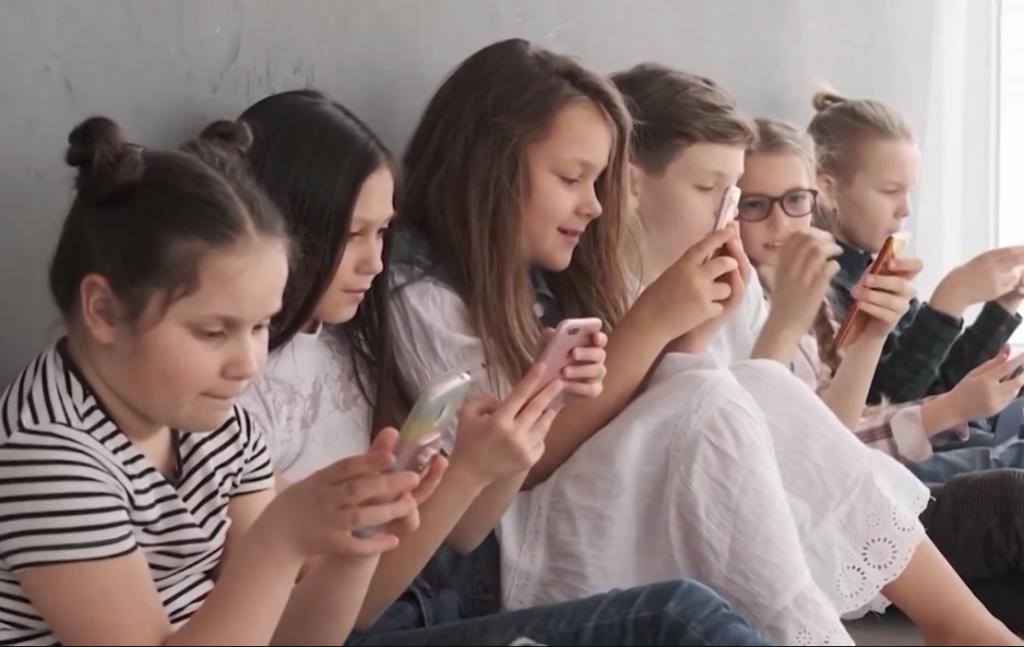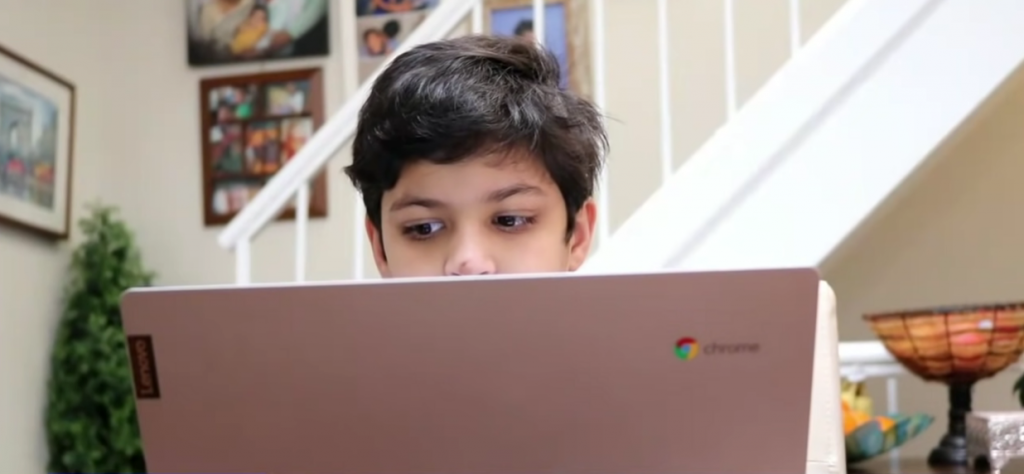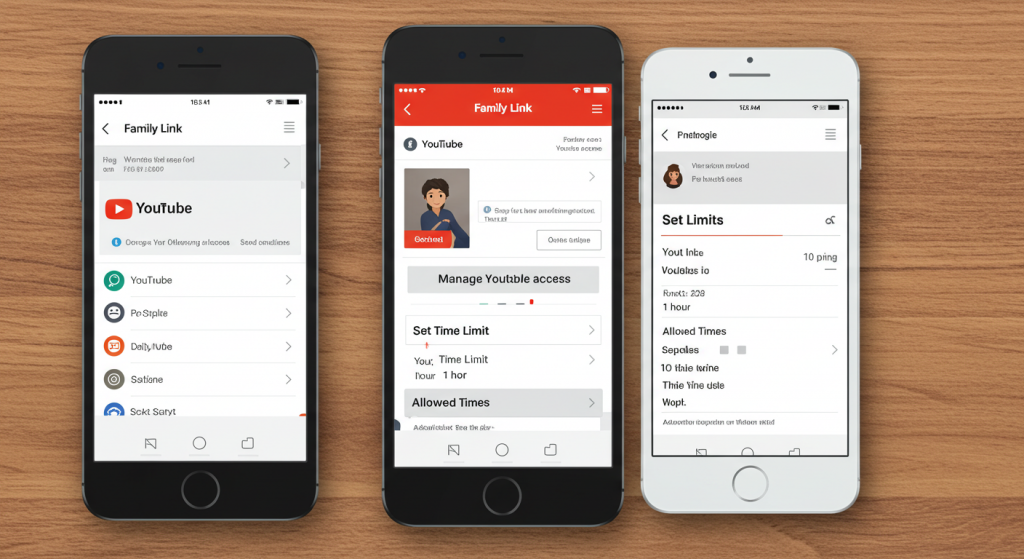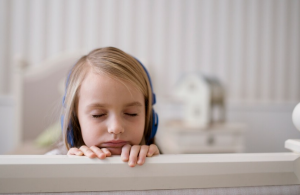One look at a busy restaurant tells the story—tiny hands swiping tablets while adults chat. Across the United States, toddlers now average over two hours of daily screen exposure—double the maximum many experts recommend.
What We'll Cover
- 10 Data‑Backed Tips to Reduce Toddler Screen Time
- FAQs
- How much screen time is okay for a 3‑year‑old?
- What are alternatives to screen time for toddlers indoors?
- Does educational TV count as screen time?
- Building a Balanced Day—Sample 24‑Hour Schedule
- Evidence Snapshot: Screen Time vs. Brain & Body
- Crafting Your Family Media Plan in 3 Steps
- Conclusion: Small Shifts, Big Gains
Long sessions in front of glowing rectangles link to delayed language skills, weaker parent–child bonding, and higher obesity risk. Recognizing these trends, the American Academy of Pediatrics (AAP) urges no digital entertainment before 18 months (exceptions: video chats) and no more than one hour of high‑quality programming for ages 2–5.
Meanwhile, World Health Organization (WHO) guidelines echo the call: children aged 2 years should keep sedentary screen time “under one hour; less is better.”
The takeaway? Kids under five thrive when they move, explore, and interact face‑to‑face. The following tips to reduce toddler screen time translate those global targets into doable daily habits.
10 Data‑Backed Tips to Reduce Toddler Screen Time

| Tip | What to Do | Why It Works |
|---|---|---|
| 1 | Create a Family Media Plan at AAP’s free tool (HealthyChildren.org). | Written limits raise follow‑through and model consistency. |
| 2 | Pick “Screen‑Free Anchors.” Designate meals, the hour before bed, and car rides under 15 min as no‑device zones. | Predictable routines reduce power struggles and improve sleep quality. |
| 3 | Swap Passive Video for Interactive Play. Keep baskets of blocks, puzzles, or musical instruments within arm’s reach. | WHO notes that replacing sedentary time with active play boosts motor and cognitive growth. |
| 4 | Use “First–Then” Language. “First we build a tower, then you can watch one show.” | Sets clear order and teaches delayed gratification skills. |
| 5 | Co‑View & Comment. When screens are used, sit next to your child and describe what’s happening. | Adult narration offsets the “video deficit effect” in toddlers. |
| 6 | Hide Apps, Not Just Devices. Move streaming icons to a folder three swipes deep; set the home screen to a photo. | Out of sight is out of mind—reduces “visual triggers” for requests. |
| 7 | Turn Off Autoplay. Disable the feature on YouTube Kids or streaming services. | Prevents “next‑episode” loops that extend viewing beyond limits. |
| 8 | Plan Outdoor Micro‑Adventures. Ten‑minute backyard scavenger hunt or mailbox walk each morning. | Short bursts of daylight and nature decrease the urge for digital entertainment. |
| 9 | Use Timers Toddlers Understand. A sand hourglass or musical kitchen timer gives a visual cue. | Toddlers grasp concrete signals better than verbal warnings. |
| 10 | Model the Behavior. Park your own phone during toddler playtime; consider a family charging station. | Kids are keen imitators—your habits frame theirs. |
FAQs

How much screen time is okay for a 3‑year‑old?
The AAP and WHO converge on no more than 1 hour of high‑quality content per day for ages 2–5, with adult co‑viewing whenever possible.
What are alternatives to screen time for toddlers indoors?
Think sensory bins, dance‑party playlists, cardboard‑box forts, and kitchen “helper” tasks like stirring pancake batter. Hands‑on play meets the same curiosity screens satisfy—without blue‑light glare.
Does educational TV count as screen time?
Yes. Though shows like Sesame Street can teach letters, they still occupy sedentary minutes. Pair them with interactive discussion to maximize benefit and stick to daily limits.
Building a Balanced Day—Sample 24‑Hour Schedule
| Time | Activity | Screen? | Why It Helps |
|---|---|---|---|
| 7:00 a.m. | Breakfast chat & toddler helps set table | 🚫 | Eye contact sets a social tone. |
| 8:00 a.m. | Outdoor walk ‑ collect leaves | 🚫 | Meets WHO active‑play target. |
| 9:00 a.m. | 20 min co‑viewed educational video | ✅ | Controlled, parent‑guided use. |
| 9:30 a.m. | Block building & snack | 🚫 | Fine‑motor skill boost. |
| 11:30 a.m. | Screen‑free lunch | 🚫 | Mindful eating aids digestion. |
| 12:30 p.m. | Nap/quiet books | 🚫 | Rest supports growth hormone release. |
| 2:00 p.m. | Sensory play (rice bin) | 🚫 | Tactile input calms nervous system. |
| 3:30 p.m. | 20 min video chat with grandparents | ✅ | Social screens trump passive viewing. |
| 4:00 p.m. | Backyard obstacle course | 🚫 | Burn pre‑dinner energy. |
| 6:00 p.m. | Family dinner—phones docked | 🚫 | Vocabulary skyrockets when adults talk at meals. |
| 7:00 p.m. | Bath & story time | 🚫 | Blue‑light‑free wind‑down. |
| 8:00 p.m. | Lights out | 🚫 | Consistent bedtime promotes melatonin release. |
Five Common Obstacles (and Quick Fixes)

-
“Screens keep my toddler quiet while I work.”
Fix: Offer a busy box (stickers, Velcro shapes) only during your calls—novelty equals focus. -
“Grandparents spoil him with cartoons.”
Fix: Share your media plan and preload shared activities—picture bingo, reading apps they can co‑use. -
“Tantrums erupt when I say no.”
Fix: Transition with a bubble countdown—blow five bubbles; when they pop, device sleeps. -
“Rainy days derail our plan.”
Fix: Rotate indoor tents, flashlight treasure hunts, or hallway bowling (plastic bottles + soft ball). -
“I need GPS/music while driving.”
Fix: Mount your phone out of reach behind the seat; stream toddler‑friendly audiobooks instead of videos.
Evidence Snapshot: Screen Time vs. Brain & Body

| Outcome | Excess Screen Time Effect | Supporting Study |
|---|---|---|
| Language delay | 6× higher risk when toddlers watch >2 h daily | JAMA Pediatrics analysis cited by AAP |
| Sleep quality | 16 min less night sleep per extra hour of evening use | CHOC Children’s review (2024) |
| Obesity odds | 42 % greater with ≥2 h/day | Same source |
| Cognitive flexibility | Higher in kids meeting WHO activity & screen limits | WHO guideline summary |
Crafting Your Family Media Plan in 3 Steps

-
Audit Current Habits
Use your phone’s Digital Wellbeing dashboard or a paper log for one week. Note when and why screens appear. -
Set SMART Limits
Instead of “less YouTube,” write “Max 30 min co‑viewed videos after afternoon nap.” -
Post & Practice
Print the plan, stick it on the fridge, and rehearse phrases like “Tablet time is over; let’s….” Consistency cements the new norm.
Conclusion: Small Shifts, Big Gains
Screens aren’t villains, yet unchecked use can crowd out the very experiences that grow curious, resilient kids. By mixing clear limits, engaging alternatives, and your own example, these tips to reduce toddler screen time transform daily routines without power struggles.
Action Checklist
- Draft your Family Media Plan tonight.
- Choose two screen‑free anchors (e.g., meals & car rides under 15 min).
- Order a $10 hourglass or set up a free kitchen timer app by morning.
Tiny tweaks today equal healthier habits tomorrow—letting your toddler’s world expand beyond the screen and into real‑life wonder.
The responses below are not provided, commissioned, reviewed, approved, or otherwise endorsed by any financial entity or advertiser. It is not the advertiser’s responsibility to ensure all posts and/or questions are answered.





![Best Ways To Keep Your Baby's Hands Warm At Night [Research-based]](/assets/images/a9b0f15e6feec7325d126bac42e75e07.png)